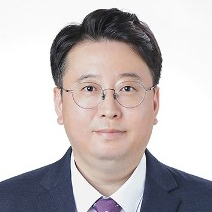Functional Materials and Advanced Processes in Water Treatment/Soil Remediation
A special issue of Applied Sciences (ISSN 2076-3417). This special issue belongs to the section "Environmental Sciences".
Deadline for manuscript submissions: closed (30 September 2021) | Viewed by 25676
Related Special Issue: Functional Materials in Water and Wastewater Treatment/Soil Remediation
Special Issue Editors
Interests: water; soil; sediment; environment; nutrient management
Special Issues, Collections and Topics in MDPI journals
Interests: environmental functional materials; water treatment; fiber
Special Issues, Collections and Topics in MDPI journals
Interests: water and soil treatment; heavy metal; ecotoxicity; risk assessment
Special Issues, Collections and Topics in MDPI journals
Special Issue Information
Dear Colleagues,
Material science is an interdisciplinary research field, including interrelationships between composition, structure, process, and performance of various materials, and widely integrated with other disciplines to form many interdisciplinary subjects. Recently, environmental materials as a new field of material science have attracted much attention. Application of functional environmental materials, both natural and synthetic, is becoming increasingly popular in water purification and soil remediation. In our first Special Issue on “Functional Materials in Water and Wastewater Treatment/Soil Remediation”, we successfully gathered 10 excellent papers in this field. These 10 papers contributed significantly to solving a variety of environmental problems. Based on the success of this first issue, we have decided to launch this second edition of the same Special Issue, which will however not be limited to functional materials but include advanced processes for water treatment/soil remediation.
The research areas of functional environmental materials and advanced processes for water purification and soil remediation are as follows: (1) Adsorption with functional materials, (2) advanced oxidation processes with catalytic oxidation materials, (3) advanced equipment for water and soil remediation, and (4) soil and sediment remediation using stabilizing agents. These materials include natural clay minerals with and/or without treatment, synthetic materials such as activated carbon, ferric hydroxide, activated alumina, biochars, photocatalysts, synthetic fiber mats, and their composites. The advanced process either includes such functional materials or not. In this Special Issue, we invite you to submit manuscripts on various functional environmental materials and advanced processes for water/wastewater treatment and soil remediation.
Prof. Dr. Seong-Jik Park
Prof. Dr. Chang-Gu Lee
Prof. Dr. Eun Hea Jho
Prof. Dr. Sanghyun Jeong
Guest Editors
Manuscript Submission Information
Manuscripts should be submitted online at www.mdpi.com by registering and logging in to this website. Once you are registered, click here to go to the submission form. Manuscripts can be submitted until the deadline. All submissions that pass pre-check are peer-reviewed. Accepted papers will be published continuously in the journal (as soon as accepted) and will be listed together on the special issue website. Research articles, review articles as well as short communications are invited. For planned papers, a title and short abstract (about 100 words) can be sent to the Editorial Office for announcement on this website.
Submitted manuscripts should not have been published previously, nor be under consideration for publication elsewhere (except conference proceedings papers). All manuscripts are thoroughly refereed through a single-blind peer-review process. A guide for authors and other relevant information for submission of manuscripts is available on the Instructions for Authors page. Applied Sciences is an international peer-reviewed open access semimonthly journal published by MDPI.
Please visit the Instructions for Authors page before submitting a manuscript. The Article Processing Charge (APC) for publication in this open access journal is 2400 CHF (Swiss Francs). Submitted papers should be well formatted and use good English. Authors may use MDPI's English editing service prior to publication or during author revisions.
Keywords
- water treatment
- soil
- process
- adsorption
- stabilization
- membrane
- ion exchange








